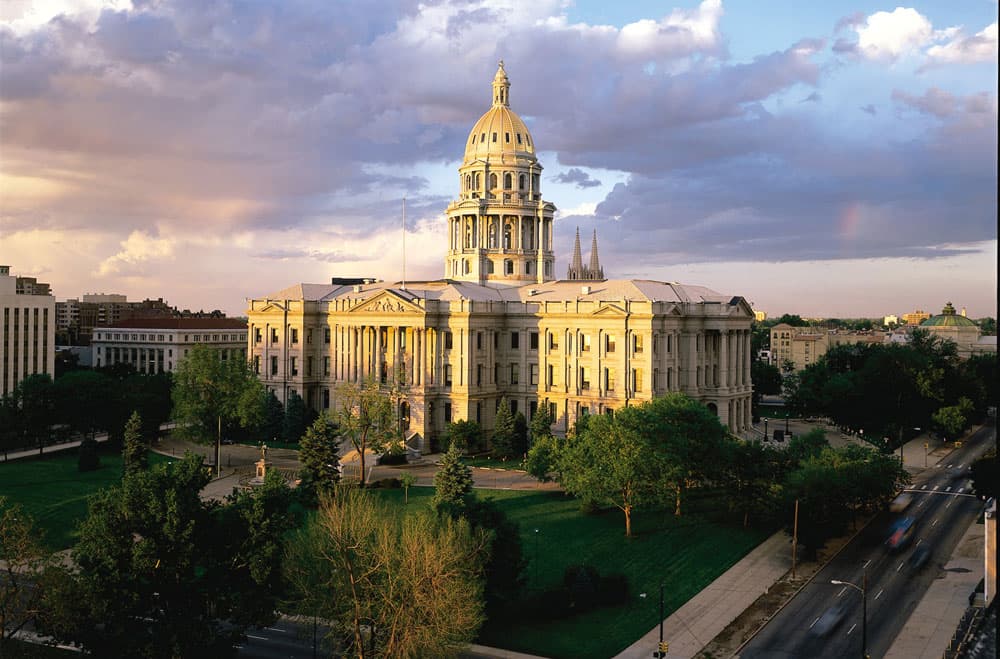One of the best spots to visit inside the capitol is Mr. Brown's Attic. This exhibit area is dedicated to Colorado history, details of the capitol's construction, a space for kids and other interesting details about the building.
Colorado Capitol Building Basics
The building is made from Colorado rose onyx (also known as Beulah red marble), a type of stone so rare that all known reserves were used in the capitol’s construction. The Colorado rose onyx itself was quarried in the town of Beulah, Colorado.
The capitol's original signature dome was made of copper, but was swapped out for gold in 1908 due to the copper’s tendency to oxidize, creating a dull patina cover. The dome was plated with 200 ounces of glistening 24-karat gold leaf to commemorate the Colorado's Gold Rush and the brave pioneers and miners who helped build Colorado. Three reapplications of the Colorado gold leaf occurred between 1908 and 1980 — the newest golden shine now comes from 65 ounces of .999 pure gold that was mined in Colorado, hammered into gold leaf in Florence, Italy, and applied in 2013.
Colorado State Capitol Building Tours
Free historical tours of the capitol building are offered and walk-ins are welcome. Reservations are required only if you are planning to tour the building with 10 or more members, are part of a senior citizen group, school, day-care center or have a disability.
Tours of the capitol take approximately an hour, including a visit to the dome-observation area (a 99-step stair climb above the third floor).
1 Mile High?
The Colorado state capitol building sits at exactly 1 mile above sea level. On the western entrance’s 15th step you’ll notice the inscription “One Mile Above Sea Level.” Don’t be fooled, though. This is not the true 1-mile marker. The inscription was made based on measuring techniques from 1909, by students of the University of Denver. Originally, a brass cap was installed to commemorate this first measurement, but after the cap was stolen seven times in a matter of 38 years, the state carved the claim into the stone step itself.
In 1969, engineering students from Colorado State University re-measured the distance and found it was slightly off. To compensate for the discrepancy, they installed a brass plaque two steps higher — however, their measurement was off as well. Finally, in 2003, college students from the Metropolitan State College of Denver re-measured the height, and in a dedication ceremony that same year, Governor Bill Owens placed the official marker on the 13th step — the true mark of 1 mile above sea level.





